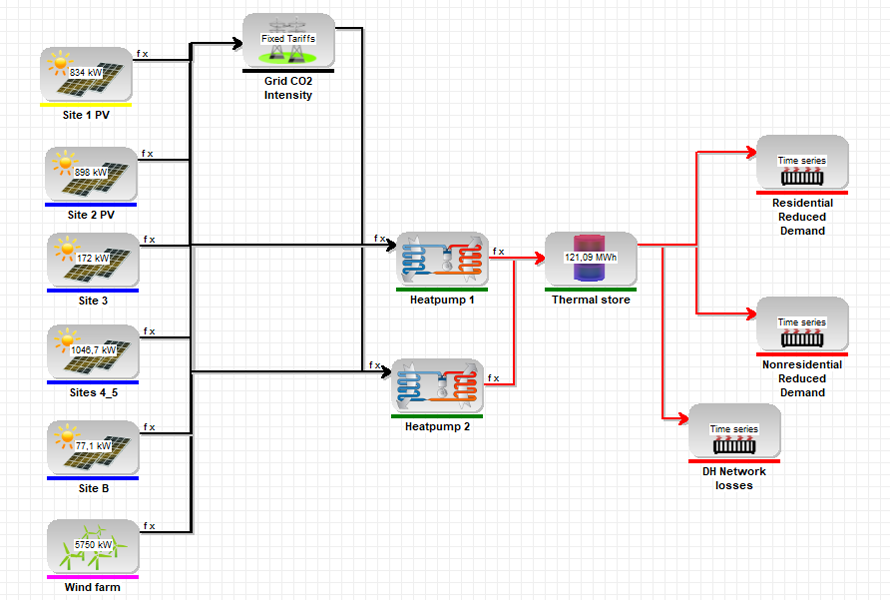The Clean Heat Vision Scenario
In the Clean Heat Vision (CHV) model, the back up gas boiler was replaced with the local renewable resources. The electrical energy output of the chosen PV panels on various rooftops of the development (which resulted from the analysis on PVSyst) was calculated by energyPRO using 2018 ambient temperature and solar radiation data for Glasgow as inputs. The wind data input resulted from the power curve of 10 wind turbines of 23MW total capacity from Whitelee Wind Farm, above a chosen 75% capacity ‘spill’ wind threshold.
The heat demand time series of the buildings were updated with their lower values, assuming energy efficiency interventions in all of them. The heat losses of the DH network in this scenario were lower, as calculated for the low temperature regime. The inputs for the two water source heat pumps remained the same as in the QQB model, with the exception of the water temperature range, which was replaced by the 30 - 55°C range. The graphical representation of the model is presented in the figure below.

The layout of the CHV model in energyPRO.
The thermal storage was sized so that it would be able to cover the average weekly demand of the buildings (including the network’s thermal losses). This resulted in a tank with a capacity of 121.09MWh and a 4400m3 volume. A temperature of 55°C was assumed at the top of the tank and an insulation of 30cm around it.
From the 2018 carbon intensity data, energyPRO worked out a threshold (changing monthly throughout the year) below which grid carbon intensity was considered as ‘sufficiently low’. Grid electricity was then used to power the heat pumps and, consequently, charge the storage, during periods when the heat demand was already covered. The output electricity of the renewables was also prioritised by the built-in operation strategy of the software, so wind and solar energy were used to cover the demand and/or charge the storage whenever they were available.